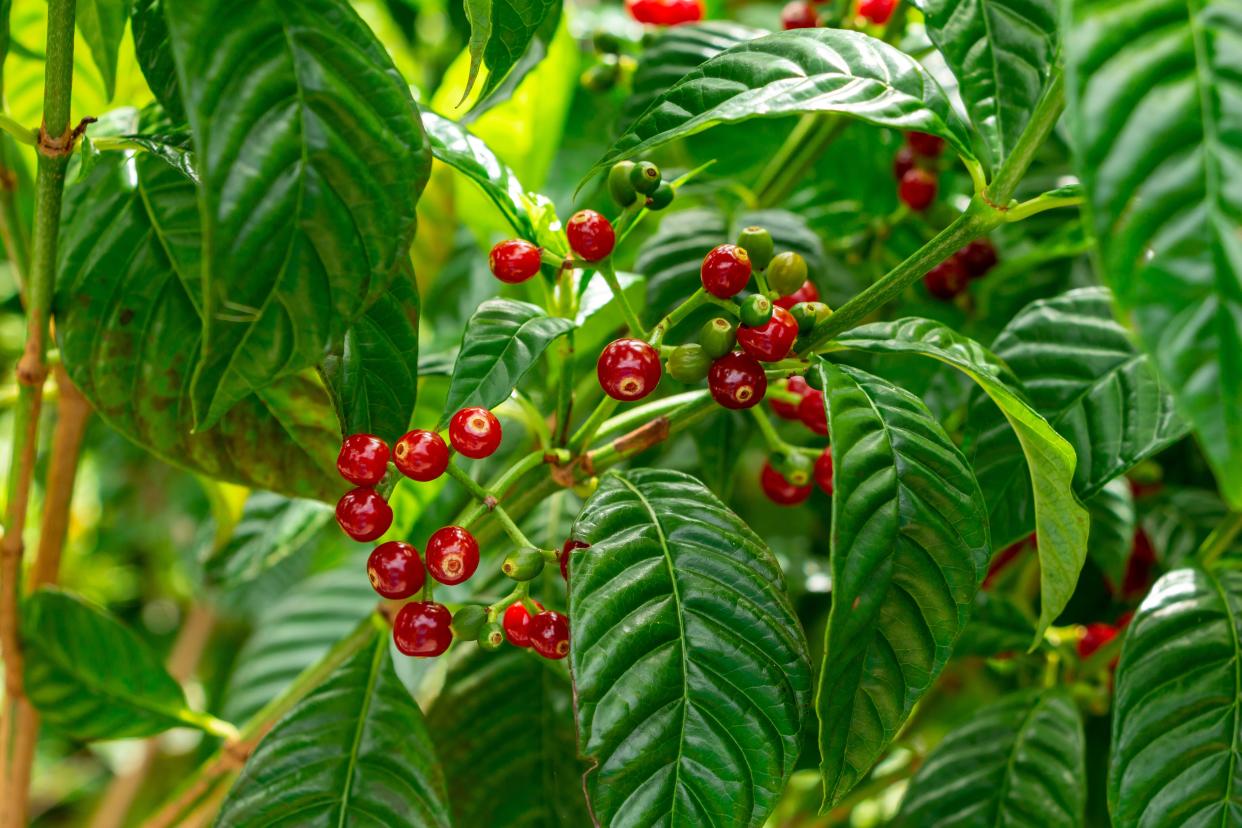CHARLES REYNOLDS: Wild and domesticated coffee

If you have the coffee-drinking habit, your essential ‘’beans’’ come from two West African shrubs, Coffea arabica or canephora. Those evergreen shrubs — up to 15 feet tall — grow best in light filtered by tree canopies, though C. canephora tolerates full sun. Coffee shrubs prefer organically enriched and mulched sites, where they’ll reliably display clusters of white blossoms in spring. Borne later are attractive red fruit, each containing two caffeine-laden seeds. Of the two species, C. canephora is more tolerant of heat, cold and sun, so it’s a much better choice for local landscapes. Propagate by seeds and cuttings. Plants available online.
Wild coffee — distantly related to the two species just mentioned — is native to Florida and the West Indies. This upright-growing and well-named species (Psychotria nervosa) ranges from 6 to 9 feet tall, performing best in part-day sun. It features glossy, heavily textured leaves and clusters of white flowers, followed by scarlet fruit that are esteemed by birds. Flowering and fruiting can occur year-round when winters are mild. To succeed with wild coffee — which favors alkaline or neutral soil — don’t enrich sites with organic matter, and don’t apply organic mulch. Propagate with seeds and cuttings. Plants available online.
TAME OVERGROWN HOUSEPLANTS
If they’ve outgrown their containers or their allotted niches indoors, many types of houseplants can be cut down to size. Bushy species such as Benjamin fig, umbrella tree and aralia can simply be cut back periodically, year after year. Eventually they may require shifting into larger containers or — alternatively — have their rootballs lifted and reduced by cutting off their sides to form squares. These squared-off rootballs are then returned to their containers, which should be refilled with fresh soil.
If you use this procedure, prune off top growth proportionally to the root loss. Other houseplants — including snakeplants and clustering palms — can be treated similarly, though entire stems must be cut out. I’ve had a Chamaedorea seifrizzii in the same container for 30 years and maintain it by removing the tallest canes once or twice annually.
PERENNIALS FOR YEARS OF FLOWERS
It’s too early to plant cool-season annuals, though many warm-season kinds may flower into winter if they’re installed soon. But several perennials that can be planted right now will bloom reliably during cool seasons for years to come. Among stalwart species are Philippine violet, red shrimp plant, firespike, Brazilian plume, lion’s ear, Tampa verbain, dianthus, blue sage and shooting star. Numerous other perennials are virtually ever-blooming, especially during mild winters. These include pentas, firecracker plant, tropical sage, Mexican petunia, Cuban buttercup, periwinkle, cat’s whiskers, Gerbera daisy, blue daze, cigar flower, Florida heather, angelonia and blanket flower. Most plants mentioned require several hours of sunlight daily. Two kinds that demand shade are Brazilian plume and blue sage, while Philippine violet, red shrimp plant and pentas grow equally well in sun or light shade.
This article originally appeared on The Ledger: Weekend plantings: Choices of coffee

